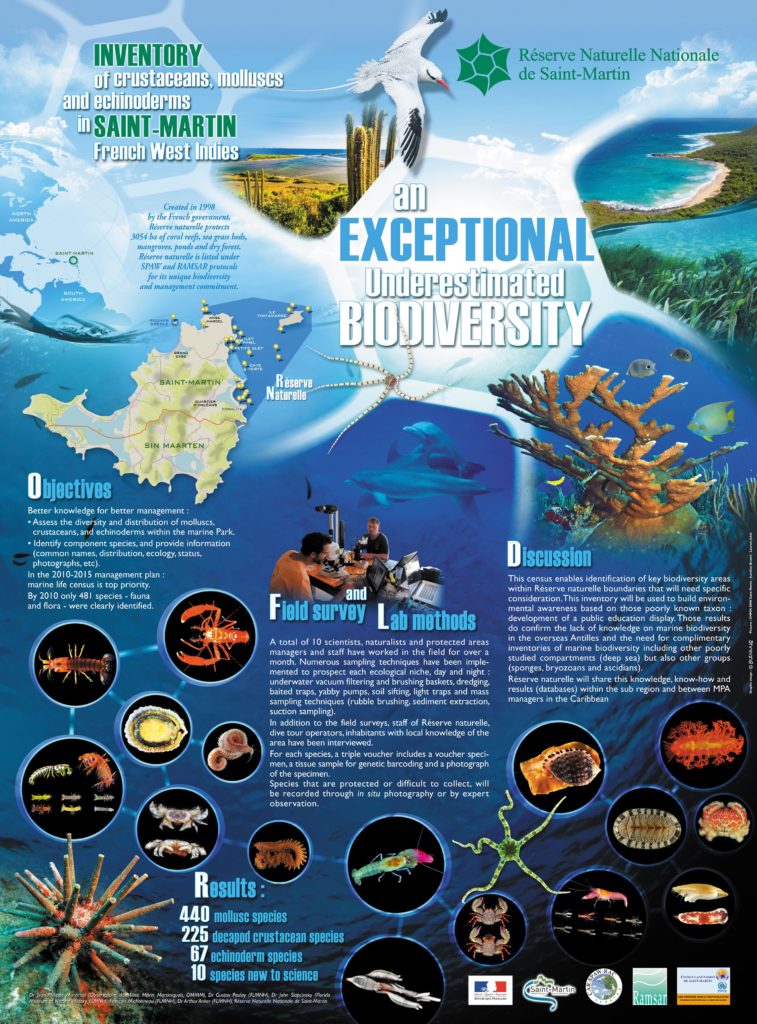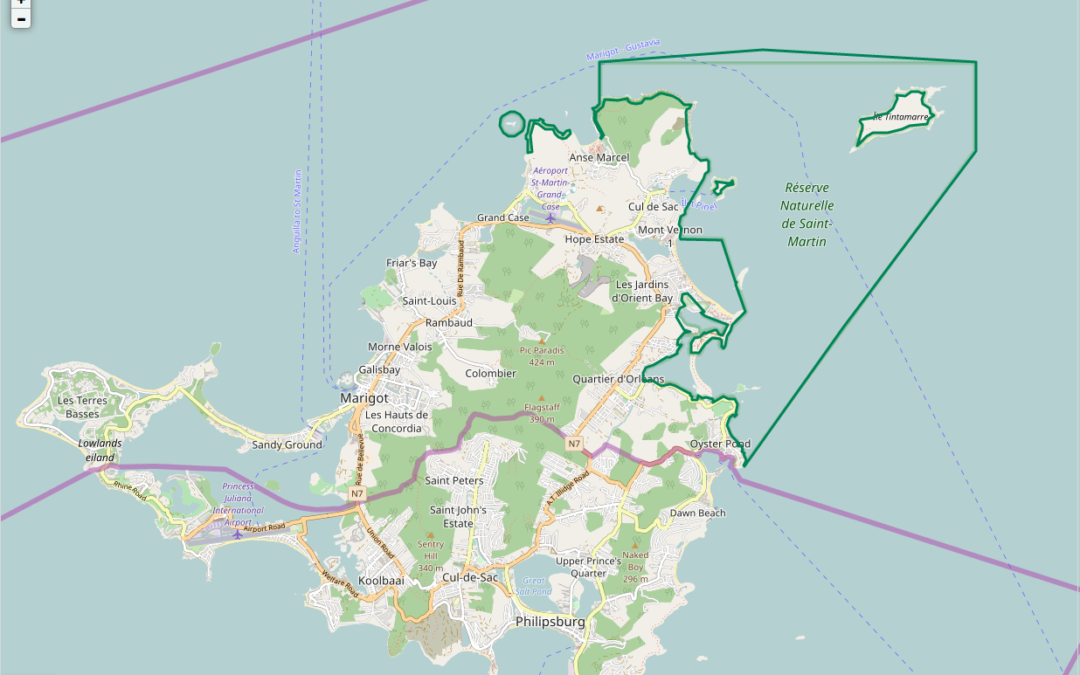We are lucky to live in a wonderful environment here on the island of Saint Martin. That is why the French governement has set up a natural reserve in the 90s.
The French “Réserve Naturelle Nationale” of Saint Martin is a haven for nature lovers and divers in the Caribbean. It covers over 3.060 hectares (7.500 acres), out of which the marine zone represents 95%. It stretches between the islands of Saint Barths, Anguilla and Saint Martin.
Saint Martin shelters many ecosystems including mangroves, underwater plant nurseries, coral reefs, coastal forests and salt ponds. The Réserve Naturelle has a large variety of land and sea plants and animals, including lots of protected species.
The Natural Reserve of Saint Martin has three main missions:
- To protect natural areas with legal restrictions.
- To maintain the biodiversity and ecological functionality of protected sites.
- To encourage the general public to appreciate the biodiversity of the Reserve.
A wealth of indexed species
In 1998, when the Réserve Naturelle of Saint Martin was created, the staff indexed 480 different species of plants and animals.
In April 2012, a scientist mission indexed 700 marine species! Seven professors from France, USA and Brazil helped with the inventory. All these newspecies were classified into
- crustaceans (such as shrimps),
- mollusks (slugs for example),
- and echinoderms (including sea urchins or starfish).
Below is a poster edited by the Reserve about the island ecosystem.

Coral reefs of Saint Martin waters
Every years, scientists are checking the seabed in the Saint-Martin Nature Reserve. They are counting corals, sea urchins, plants that are important for water quality.
This is an important ecosystem, as coral reefs protect the coast from waves. They also provide habitat, food, shelter and nurseries for thousands of species.
Boat anchors break away underwater plants and corals, and chains destroy them along their entire length. This is why boats must use the moorings provided or anchor on the sandy areas. Furthermore it is forbidden to break and damage the reefs with flippers.
Fishing is not allowed in the Nature Reserve and you cannot take any fish from there.
Marine mammals & whale watching
Nine marine mammal species can be observed in the waters off of St. Martin, Anguilla and St Barts during spring. This area os a breeding ground for humpback whales. Divers may even hear males singing before going up to the surface to breathe.
Dolphins are often seen swimming along boats, especially around Rocher Creole and Tintamarre islands.
Salty ponds
Located where land meets water, these ponds and mangroves are home to many different animals, including 85 bird species out of which 55 are now protected.
Ponds have an important role in our ecosystem. They help reduce flooding during heavy rain, purify water before it goes into the sea, and also protect the coast from the sea.
The natural reserve runs a conservation programme to improve the ponds areas. This includes:
- planting mangroves,
- creating safe areas for birds,
- improving connections between land and sea,
- creating discovery trails.
Bird species in Saint Martin
As we mentioned above, there are 85 species of birds living on island, including 55 protected ones. You may spot for example:
- pelicans
- brown noddies,
- little terns,
- bridled terns,
- red-tailed tropic birds,
- herminier puffins,
- great egrets and snowy egrets.
Some of these species are endangered as cliffs are eroded, and rats are proliferating. This last reason explains why it is strongly advised not to leave any food on the coast, in order not to encourage rats multiplication.

